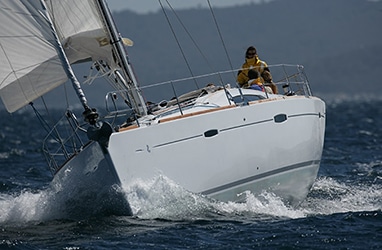Narrow Channels and Traffic Separation Schemes
Rules 9 and 10 deal with narrow channels and traffic separation schemes, and mainly refer to larger commercial traffic. But there are some gems you need to know as a sailboat because you will be interacting with other traffic.
In a traffic separation scheme, traffic lanes are set aside for the safe operation of traffic in high-density areas. Much like a highway, traffic flows in singular directions in each lane and there is a separation zone between them. Unlike highways, there are no painted lines or necessarily any signs. Rather, they are shown on charts. You must be cognizant of the locations of these lanes and plan ahead for such.
Narrow channels are more obvious. They are usually the entrance to a harbor, a river, an inland waterway, or a dredged channel. They are often marked by the shore or by channel markers.
Gem (1) When proceeding along a narrow channel keep the edge of the channel as close to your starboard side as safe and practically possible. Thus, it is prudent and safe to motor rather than sail.
Gem (2) As a sailboat under power or sail, you can not impede the passage of a vessel that can only safely navigate within a narrow channel of fairway.
Gem (3) No anchoring in a narrow channel, traffic lanes, or traffic separation zones.
Gem (4) If you must cross a traffic separation lane, cross at right angles.
Gem (5) A vessel of less than 20 meters in length or a sailing vessel shall not impede the safe passage of a power-driven vessel following a traffic lane. i.e. Give-Way to all power vessels in a traffic lane. Yes, as a sailboat, you must even Give-Way to a recreational ski boat for example.
Advice: Stay out of traffic schemes





